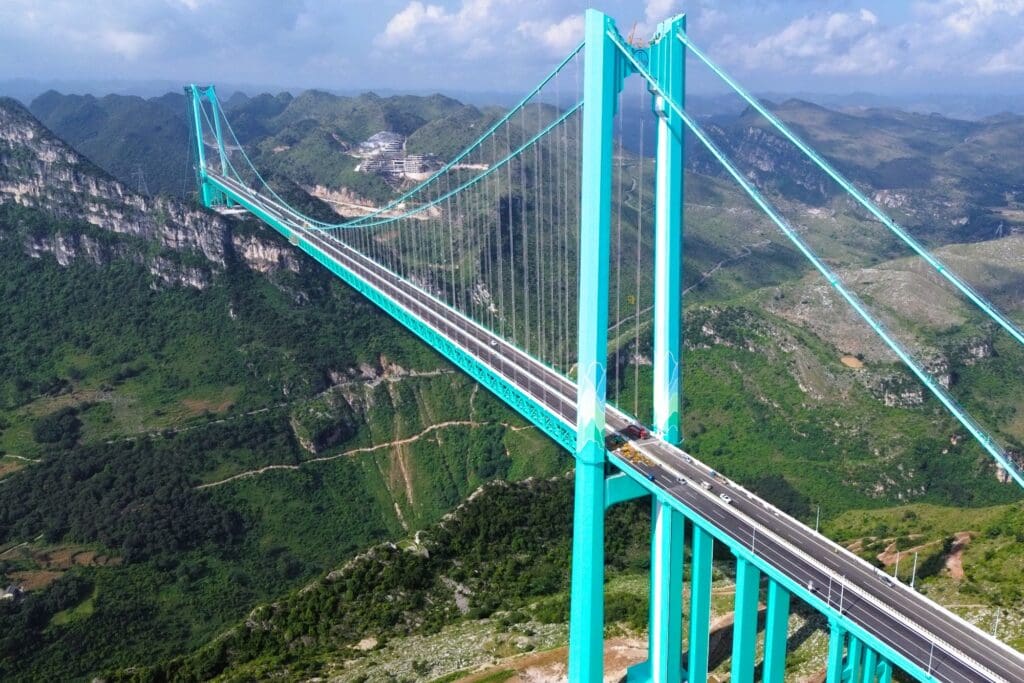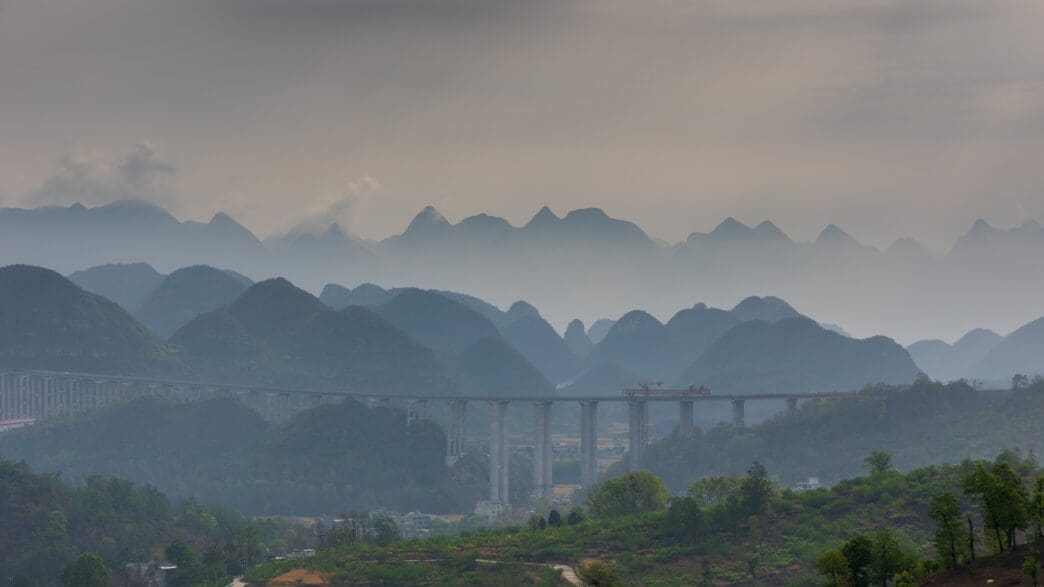Executive Summary
- China has opened the Huajiang Grand Canyon Bridge in Guizhou province, claiming the title of the world’s tallest bridge at approximately 2,050 feet above a river and gorge.
- The new bridge significantly reduces travel time from two hours to two minutes, aiming to boost tourism and economic development with features like a glass elevator, walkway, and bungee jumping.
- The Huajiang Grand Canyon Bridge reinforces China’s global leadership in bridge engineering, as the nation accounts for the vast majority of the world’s tallest bridges and continues extensive infrastructure investment across challenging topographies.
The Story So Far
- The opening of the Huajiang Grand Canyon Bridge is part of China’s broader strategy to invest heavily in monumental infrastructure projects, aiming to overcome challenging topographies and drastically improve regional connectivity. This extensive development, fueled by the nation’s advanced civil engineering capabilities, seeks to bolster economic growth and tourism in previously remote areas, solidifying China’s position as a global leader in high-altitude bridge construction.
Why This Matters
- The opening of China’s Huajiang Grand Canyon Bridge, now the world’s tallest, solidifies the nation’s global leadership in advanced civil engineering and large-scale infrastructure development. This monumental project dramatically cuts travel time and is strategically designed to bolster tourism and economic growth in the region, underscoring China’s ongoing commitment to connecting challenging terrains and driving regional development through extensive infrastructure investment.
Who Thinks What?
- Chinese officials emphasize that the Huajiang Grand Canyon Bridge is a significant infrastructure project designed to drastically reduce travel time, bolster tourism, and drive economic development in the Guizhou province.
- Technician Tian Hongrui views the bridge’s completion with a mix of bittersweetness and anticipation, seeing it as the end of one chapter and the start of a new one, highlighting the personal impact of such engineering feats.
- The article and data from Highestbridges.com highlight China’s global dominance in bridge engineering, noting that the country holds the vast majority of the world’s tallest bridges and consistently invests in such projects to improve regional connectivity.
China has officially opened the Huajiang Grand Canyon Bridge in Guizhou province, claiming the title of the world’s tallest bridge. Soaring approximately 2,050 feet above a river and gorge, the 4,600-foot-long structure significantly reduces travel time and is intended to bolster tourism and economic development in the region. The bridge surpasses the Royal Gorge Bridge in Colorado, which stands 956 feet above the Arkansas River, according to NBC News.
The construction of the Huajiang Grand Canyon Bridge took three years and eight months to complete. Officials project that the new infrastructure will cut the journey across the canyon from two hours down to just two minutes, drastically improving connectivity.

Designed to attract visitors, the bridge features a high-speed glass elevator leading to a café situated 2,600 feet above the river. Tourists can also experience a 1,900-foot glass walkway and partake in bungee jumping activities, as reported by NBC News.
Guizhou, a province home to approximately 40 million people, is a hub for ambitious bridge construction, with over 32,000 bridges either completed or currently underway. This extensive network underscores China’s ongoing investment in infrastructure projects across its varied terrain.
Technician Tian Hongrui reflected on the project’s completion, telling CCTV News, “Leaving now is bittersweet, but this isn’t the end. It’s the start of a new chapter,” highlighting the personal impact of these large-scale engineering feats.
China’s Dominance in Bridge Engineering
The Huajiang Grand Canyon Bridge is the latest addition to China’s impressive portfolio of high-altitude infrastructure. The nation currently accounts for the vast majority of the world’s tallest bridges, underscoring its advanced capabilities in civil engineering and strategic investment in overcoming challenging topographies.
According to Highestbridges.com, the top ten tallest bridges globally are overwhelmingly located in China, with many situated across mountainous provinces like Guizhou, Yunnan, Hubei, and Sichuan. These structures are integral to improving regional connectivity and supporting economic development in previously remote areas.
Global Engineering Milestones
The newly opened Huajiang Grand Canyon Bridge in Zhenfeng, Guizhou, stands at 2,051 feet with a main span of 4,659 feet, completed in 2025. It is designed to connect major tourist spots and offers unique visitor experiences.
The Beipanjiang Bridge Duge, also in Guizhou, previously held the world record, completed in 2016. It spans a deep gorge at 1,854 feet with a main span of 2,362 feet, crucial for regional connectivity.
Other prominent Chinese bridges include the Tianmen Bridge in Guizhou (expected completion 2026, 1,837 feet), the Xiaowan Lancangjiang Bridge in Yunnan (expected 2028, 1,706 feet), and the Siduhe Bridge in Hubei (completed 2009, 1,627 feet), an early pioneer in China’s high bridge construction.
Further demonstrating this trend are the Lugu Lake (Woluohe) Bridge in Sichuan (expected 2026, 1,617 feet), the Puli Bridge in Yunnan (completed 2015, 1,591 feet), the Jinshajiang Wudongde Bridge in Sichuan (expected 2028, 1,591 feet), the Yalong Liangshan Bridge in Sichuan (expected 2026, 1,575 feet), and the Nanpanjiang Bridge Puzhehei in Yunnan (expected 2028, 1,558 feet). These projects collectively highlight China’s ongoing commitment to monumental infrastructure development.
Infrastructure and Development
The opening of the Huajiang Grand Canyon Bridge marks a significant engineering achievement for China, reinforcing its global leadership in large-scale infrastructure projects. This new landmark not only offers practical benefits in terms of travel efficiency but also serves as a potent symbol of the country’s ongoing drive for regional development and technological prowess.








